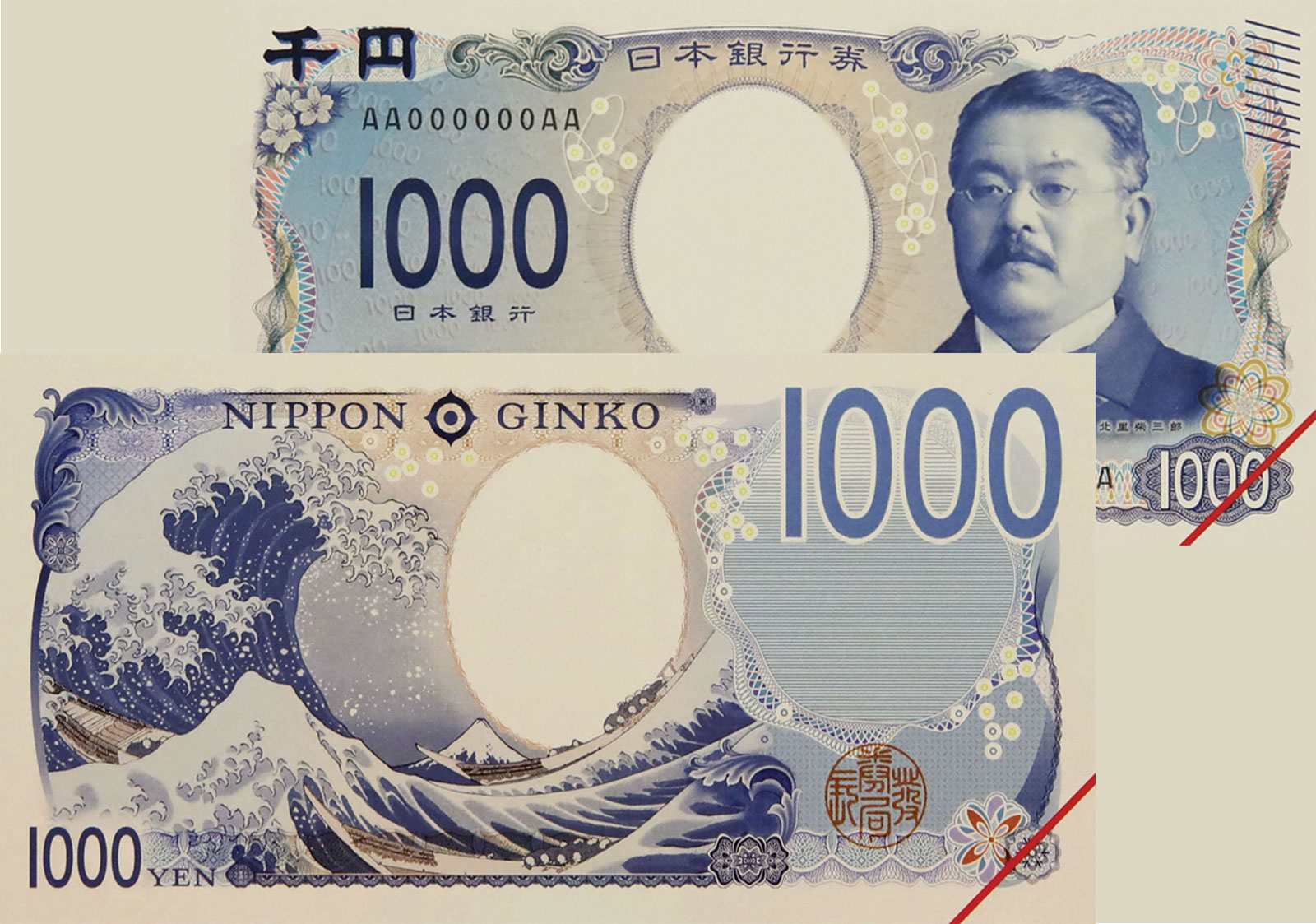Japan spruces up its currency with holograms, trailblazers, and iconic art
Pick up a 1,000 yen bill in a few years and you’ll likely encounter a 3D holographic image of a groundbreaking microbiologist on one side and one of the world’s most recognizable ukiyo-e woodblock prints on the other. On the 5,000 and 10,000 yen bills, you’ll find 3D images of a women’s education pioneer and the man known as the father of Japanese capitalism.
The Japanese government recently announced a complete makeover for much of its currency. In April 2019 the finance ministry revealed redesigns of the three most commonly used banknotes (the 1,000, 5,000, and 10,000 yen bills) along with 500 yen coins, marrying cutting-edge anti-counterfeiting tech with world-renowned artwork and honoring pioneers in science, business, and education.
The banknotes, which are redesigned every 20 years, will go into circulation in 2024, while the new coins will debut earlier.
Trio of leaders
The new banknotes honor a trio of 19th and 20th century leaders in the development of early modern Japan.
● Eiichi Shibusawa (1840–1931), the “father of Japanese capitalism,” will be featured on the 10,000 yen note, the most widely circulated banknote in Japan. Shibusawa was a business leader and entrepreneur who founded the country’s first bank, along with approximately 500 other business and economic organizations, including the Tokyo Stock Exchange and a number of businesses still in existence. He was also a champion of civil society, believing that public interest should come before profits, and was involved in the founding of hundreds of organizations promoting social welfare, education, and international exchange. He once observed that an economy has no national borders.
● Umeko Tsuda (1864–1929), a pioneer in women’s education, will be featured on the 5,000 yen note. As a young child in 1871, Tsuda was one of the first female students sent overseas to study on a government diplomatic program, just two decades after Japan’s 200-year-plus period of isolation ended. She returned to Japan and fought for women’s higher education, eventually founding one of the country’s first women’s colleges in 1900 (now Tsuda University).
Shibasaburo Kitasato (1853–1931), a physician and bacteriologist, will be the face of the 1,000 yen note. Kitasato discovered a method to prevent tetanus, codiscovered the infectious agent responsible for bubonic plague, founded the Institute for Infectious Diseases, and laid the groundwork for modern medicine in Japan. He was nominated for the Nobel Prize in 1901.
The Great Wave
While the banknotes’ new fronts will feature some trailblazers in Japanese history, the back of the 1,000 yen bill will highlight an innovative and influential work of art: Hokusai’s Great Wave off Kanagawa, an iconic example of the traditional Japanese ukiyo-e art form.
Finished around 1830, the striking image of an enormous ocean wave was painstakingly enhanced by the artist with a new shade of blue known as “Prussian blue,” imported from Europe during a time when Japan was largely isolated from the rest of the world. Hokusai’s dramatic waves, frothing with sea-foam talons, frame Mt. Fuji in the background and sweep up fishermen crouching in boats in the foreground, conveying at once movement and stillness. Many of Hokusai’s prints eventually left Japan and influenced artists abroad, including Claude Monet, Mary Cassatt, and Vincent Van Gogh.
Images of wisteria flowers and a historic Tokyo train station building will appear on the backs of the 5,000 and 10,000 yen notes, respectively.
Whereas the movement of an enormous wave is conveyed on the back of the 1,000 yen bill, the fronts of all three new banknotes will capture movement via sophisticated 3D holographic portraits. According to the Japanese Ministry of Finance, the new banknotes’ holographic portraits, which rotate when tilted, are an international first.
Additional new security components of the redesigned bills include high-definition watermarks, holographic stripes, and a holographic patch. The material used for the banknotes will incorporate fibers native to Japan.
Although the government has taken steps to promote cashless transactions, cash remains very popular in Japan compared with other countries. While the cashless payment rate is rising, the amount of currency in circulation is increasing, in part because of saving habits. So there is still a need, according to Ministry of Finance representatives, to continue to provide currency with high confidence. These new designs, they expect, will do just that.
Opinions expressed in articles and other materials are those of the authors; they do not necessarily reflect IMF policy.










